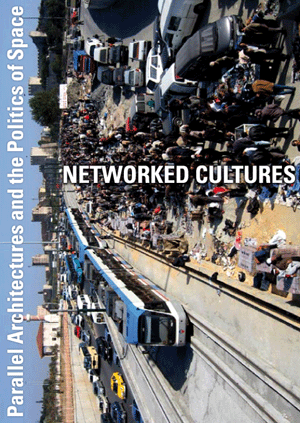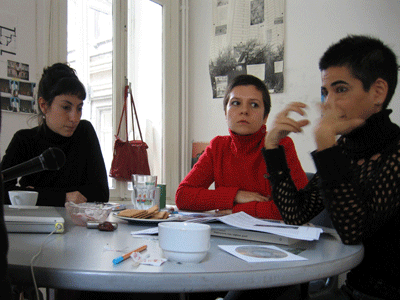_loginregistrieren_database_5 Factories - Worker Control in Venezuela Dario Azzellini & Oliver Ressler _ALMOSTREAL ECF _AnArchitektur Jesko Fezer _Arizona Road Azra Aksamija _Balkan Konsulat rotor _Bata-ville: We are not afraid of the future Nina Pope + Karen Guthrie / www.somewhere.org.uk _Black Benz Race krcf in collaboration with Felix Stalder, Arben Gecaj, Faton Topalli and Osman Osmani _Black Sea Files Ursula Biemann _Camp La Jolla Military ParkOwen Mundy _CHANGE REALITY: Renaming the Streets of Zagreb REINIGUNGSGESELLSCHAFT _Conceptual Paradise. There is a place for sophistication Stefan Roemer _de-regulation Irit Rogoff, Kutlug Ataman, Stefan Roemer_news ____________Bloomberg SPACE, London ____________Kumu Art Museum Tallinn ____________Open Space, Open Systems - Vienna ____________CAA 2011 Conference, New York ____________Forum Stadtpark, Graz ____________Symposium, Istanbul ____________lungomare, Bozen/Bolzano ____________Metropolis Biennale 2007-17, Copenhagen ____________new publication available now ____________Mestna Galerija, Ljubljana ____________Livestream of Networked Cultures documentary ____________ |
_ConversationsOda Projesi
Oda Projesi
PM/HM: The name of your group – Oda Projesi (room project) – refers directly to your first project: About a Useless Space. Can you describe what importance this project had and why you incorporated it into the name of your collective? Seçil Yersel: Our first project is the one we always somehow find ourselves going back to or referring to, either in between our other projects or during them. When we first moved to this neighbourhood in Galata we hadn’t intended to start such a project, but after we started meeting our neighbours and working more with the dynamics of Istanbul, as well as thinking about the state of the art scene here, we asked how we might accommodate the way the neighbourhood functions within our own space. We didn’t want to repeat the usual concepts offered by “art” spaces to “audiences”, so instead we first tried to create a meeting point. We emptied one of our three rooms, and made it available for potential projects, while the other rooms remained more or less private. This one room never looked like a white cube or a gallery space. It was just empty and cleaner than the other rooms. And because it was empty and clean, it was like a gap in the neighbourhood, and the neighbours kept asking: “Why is the room empty?” This is when we started talking about a space’s possibilities. In a sense, it was really about a space that could become a place. Since it was open for shaping, we invited people to it, both our neighbours and people from the art scene, and had them read a text by George Perec called About a Useless Space. The text was about searching for a room that doesn’t have a function, that is intentionally functionless. At first it’s like an environmental space; it’s every room in which you can possibly do something: a room for cutting your nails, a room for looking outside – in other words, Perec was writing about the possibility of a room that has no function in itself, a “useless” room. Over the past eight years, the space has actually been “useless”; it has gained and lost its function during projects and daily life. It has not really been an “art space”, a living space, workspace or studio. In between, it has had many different uses. PM/HM: To enable a space to continuously re-invent itself for such a long period, one needs to consider how to sustain a certain constituency. How did you go about this process of both continuation and change? Özge Açıkkol: Maybe Istanbul itself helped us a lot…The process happened on its own, because the actions and even the “curating” changed from project to project. For example, we carried out “one-day” projects in which we invited people to the room; we told them that for this one day it would be their space; and about once a week they did their projects there. We also invited our neighbours to do the same. If a space doesn’t present itself as an exhibition space, then the audience doesn’t really become or act like an audience. Such a relaxed situation also opens up other possibilities. For instance, since people didn’t actually know the closing and opening hours of the space, they would just drop by. Or it was possible that someone who was just passing by would see a light and say “What’s happening here?” and then we would sit together and talk, and so on. The first people who came to see us or joined us were neighbours; then there were those we knew and emailed, but who didn’t live in the neighbourhood – they would come by to see what we were doing; last there were those who just happened to pass by. So in a sense, it also has to do with the discussion we had with Vasıf Kortun, whether what we were doing was public art or not. Though we did not really think about or discuss whether we were doing public art. The type of art we did emerged along the way as we did things: theory came afterwards – actions were what dominated. And as long as we’ve been here, and we’ve been in the same neighbourhood now for 8 years, we’ve had relationships that go beyond our being artists. We’re simply part of the neighbourhood, even if we are somewhat strange neighbours. We’ve tried to shape this kind of role not just with the neighbours in Galata but also with the art scene in Istanbul! PM/HM: Apart from exposing yourself to everyday situations, this sort of creativity has to do with documenting and narrating such situations with respect to an outside audience. How do you feel about these different levels of your work – the local effect that is related to your work on a one-to-one basis and its effect on the discursive field through which it gets distributed globally? Seçil Yersel: The local effect we’ve experienced in creating this multi-functional space has been mainly related to our not being read properly, misread or receiving no recognition at all. Though art critics have been able to write that an exhibition was opening at the Oda Projesi space. And since there were not so many artist-run spaces at the time in Istanbul, this aroused people’s curiosity. Also the artists we worked with were happy to be invited to a place that was more than an exhibition space or a stage. The participant and the audience were more affected than the art scene in Istanbul. The effects became more visible on the scene after we left the neighbourhood and started becoming more mobile. As regards the discursive field, the effect was rather that we were viewed as an example of a “Turkish artist group that works with the public!” We started receiving invitations, but we rejected them as they tended to read us wrong, extracting us from Istanbul and the context, seeing only our actions or just looking for results. There was also another effect with regard to the discursive field: we were thought of as an artist group that could be taken for granted between the many museums and classic exhibition spaces. Along the lines of: What can Oda Projesi do in such a space? How can we deal with them? You might call this a positive effect. Well, we’ve always been open to the fact that what we’re doing in Istanbul might be interpreted from, let’s say, Japan, in a variety of ways… For example, the project has one side that has a lot to do with the local context, but it also has a side that is more than that. We discussed such issues when we published an edition of Annex newspaper in Stockholm and how an art space functions in a city. The people we invited had a space in the peripheries of Stockholm, in an immigrant neighbourhood and we wondered how it functioned, because we thought it might be a great tool and should have a power of its own. But afterwards we realised that the people in this area and the artists didn’t have a relationship with each other, and the artists were just saying to themselves: “It’s so strange and interesting and nice to be in such a neighbourhood and work part time as an artist.” So, in this sense, no real discussion took place. PM/HM: In view of such experiences, do you now see yourselves more concerned with the context of art production than in your first project, which focused on the actual space of a particular courtyard? Güneş Savaş: Yes, because we think, as a rule, the power of art and artists has always been used on the same audience, in the same context, even in the same language – the same understandable language – and with the same people around. If we can work with musicians who have nothing to do with contemporary issues, or an actor, or with others from different disciplines, then we can also work with our neighbours. We feel that art has always been produced for and consumed by a very small circle of people. I mean, if you go to an exhibition space, modes of transmission are very limited. Experiences in the neighbourhood have shaped our project and enabled it to open itself up more. Like now we’ve become more mobile and no longer have a concrete space: we work, for instance, at a radio station or do projects in a minibus; we share our experiences in discussions out in the field; and carry out short-term projects… we’ve also become more deeply involved in art production. All this has been the effect of Istanbul as a city on us! Since we live in this city and produce with it, we’re constantly trying to understand how this city stays alive.
|
_broadcasts_conversations+ Ana Dzokic and Marc Neelen+ Ayreen Anastas and Rene Gabri + atelier d'architecture autogérée (aaa) + Asya Filippova + Sophie Hope and Sarah Carrington + Branca Curcic + Christoph Schaefer + Campement Urbain + Claudia Zanfi + Despoina Sevasti and Poka-Yio + Erden Kosova + Helmut Batista _textsRadio as Spatial Practiceby: Paulo Tavares Survival Kits: Artistic Responses to Globalizationby: Marga van Mechelen What Ever Happened to Cultural Democracy?by: Sophie Hope I don't know how to explain ...by: Anca Gyemant Trading Placesby: Peter Moertenboeck & Helge Mooshammer Milosevic as Architectby: Srdjan Jovanovic Weiss When the Unavoidable Knocks at the Door ...by: Gulsen Bal Tracing Translocality: The BlackBenz Raceby: Felix Stalder travelling lexicon towards a global positioning systemby: Celine Condorelli |
